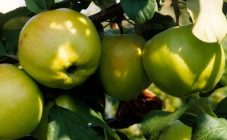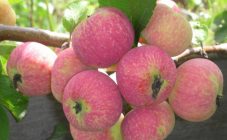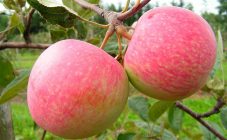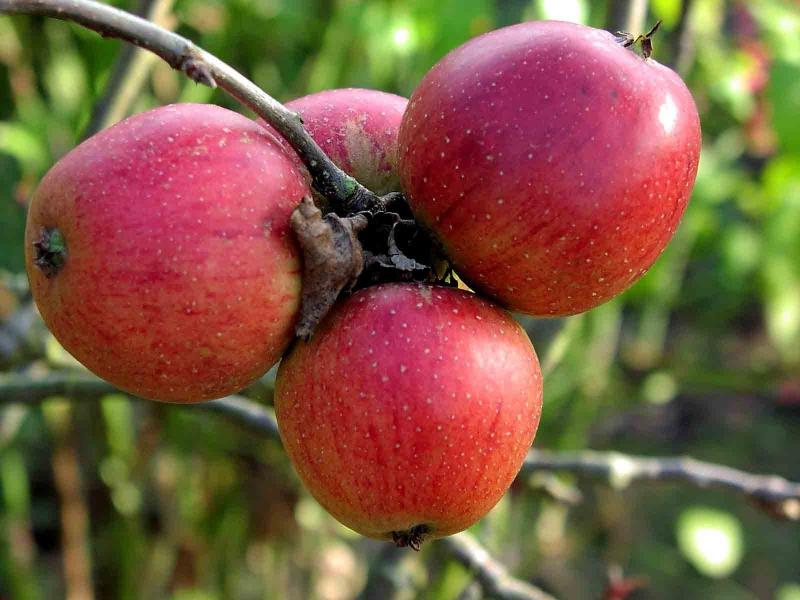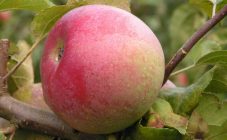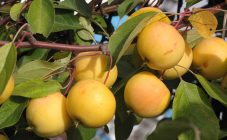Content:
Northern Sinap is a frost-resistant apple variety, like the equally well-known Gorny Sinap apple tree, distinguished by a good quantitative indicator of yield and suitability of fruits for storage for a long time. In addition, the apple tree is easy to care for. Despite the fact that the direction of cultivation of this variety is considered to be the northern regions, the main characteristic of which is cold winters, it is often grown in the southern regions of our country. However, like any varietal variety of this crop, the North Sinap apple tree needs proper planting and careful adherence to agrotechnical recommendations for care.
Description of the North Sinap apple tree
This apple variety is grown not only within our country. It has long been considered widely known among gardeners - each apple is of high quality, and the plant does not require complex care. Moreover, the fruit can be stored for a long time.
This apple variety is not a dwarf one, since the minimum tree height is 5 meters. The crown is characterized by medium thickening, has a pyramidal shape, which includes several thick branches of a spreading type, from which thin lateral branches grow. Each individual leaf has a dark green hue, has a shiny surface, light edging, curl at the end of an elongated shape.
The varietal tree is distinguished by an early fruiting period. The first apples ripen two years after planting in a permanent place. The beginning of stable fruiting occurs in the 5th year. A 15-year-old apple tree is capable of producing almost 200 kg of apples.
Flowers of a pale pink shade are large in size and bright aroma. Due to the fact that during the transition to the flowering stage, the blooming of all flowers occurs at the same time, during the flowering period the tree has a decorative appearance.
The shape of the fruit is round; each fruit weighs approximately 100 grams. The color of apples is yellow-green, eventually becoming golden. When ripe in the sun, the sides take on a radiance and pink tint. The fragrant snow-white pulp is distinguished by a dense structure, juicy consistency, sweet and sour taste with some spice.
Northern Sinap apples are suitable for use in various cooking options:
- fresh;
- in the form of jam;
- jams;
- apple compote;
- wine;
- apple juice.
The chemical composition of the fruit includes such useful trace elements as:
- Sahara;
- acids;
- vitamin C;
- dry matter;
- pectin;
- active substances.
The founder of the North Sinap variety is I.V. Michurin, who crossed two varieties: Kandil and Kitayku. The seeds he received went to S.I. Isaev, who created this apple variety.
The transition to the apple blossom stage, which lasts for a week, falls on June. The variety is considered partially self-fertile - it can be pollinated by the following varieties:
- Antonovka;
- Pepin Saffron;
- Pomom-Kitayka;
- Slavyanka.
The subspecies of the North Sinap variety are:
- Sinap Orlovsky;
- Moscow winter;
- Moscow late.
The high-quality apple tree North Sinap is distinguished by its average resistance to dry weather conditions, powdery mildew and scab disease.It is possible to prevent the occurrence of these negative factors that interfere with the healthy development of a plant by taking preventive treatment measures.
This varietal Sinap grows best in several regions of our country:
- in the Central region;
- in the Central Black Earth Region;
- in the Middle Volga;
- in the Lower Volga region;
- northwestern FD;
- in Eastern Siberia;
- in Belarus.
Agrotechnics
Light to medium loamy soil for planting a tree should have a neutral reaction. In conditions of heavy damp soil, plant growth and the process of fruit set stop. In addition, planting with nearby groundwater, as well as in an area subject to strong drafts, should be avoided. The land must be watered periodically.
When planting trees, a 5 meter interval must be observed. The minimum size of the landing recess is 60x70 centimeters. A stake should be hammered in the center of the pit, serving as a support for the seedling. It is recommended to add an earthen mixture into the recess for planting, which includes:
- topsoil;
- humus;
- 50 grams of superphosphate;
- 50 grams of potassium sulfate.
Planting process
Step-by-step instructions for planting work are as follows:
- Carefully analyze the appearance of the planting material;
- Remove rotten areas of the root system;
- Place the seedling on the north side of the installed support;
- Spread the roots;
- Leave the root fork 4 centimeters above the ground, without covering it with soil;
- Fill the planting hole with the gradual addition of soil;
- Compress the earth in the near-trunk area;
- Build a small roller around the tree so that water can be retained during irrigation;
- Water the seedling;
- Mulch the near-trunk area using a mixture of the following components:
- humus;
- wood chips;
- plant residues.
- Tie the tree to the reinforcement with a soft twine.
Care advice
The list of measures for how to properly care for includes:
- Fertilization;
- Watering works;
- Loosening the soil;
- Removal of weeds;
- Fastening fruiting branches to a support.
Fertilization and watering works
The first fertilization, carried out at planting, is enough for 2 years. The calculation of the amount of subsequent fertilization is based on indicators such as soil structure and fertility. Watering work must be carried out regularly.
Forming an apple tree
The annual molding of the crown part of the apple tree is carried out in order to:
- Elimination of crown thickening;
- Prevention of branch breakage;
- Plant rejuvenation.
The formation of the tree is carried out in a tiered way. Several large branches should remain in the crown, the distance between which is about half a meter.
Positive and negative characteristics of the variety
The list of advantages of the North Sinap apple tree, in comparison with other varieties, includes:
- suitability for long-term storage;
- early maturity;
- winter hardiness;
- the presence of average resistance to a number of diseases;
- medium resistance to drought;
- a high yield rate, which has a similar varietal apple tree Chelyabinsk Sinap;
- excellent gastronomic qualities.
The list of disadvantages consists of the following points:
- small fruits in the bountiful harvest season;
- different sizes of apples;
- late ripening.
North Sinap is an excellent early-growing garden apple tree, which gives a rich harvest of fruits that are distinguished by high taste. Despite the presence of shortcomings, this variety has long been widely known among gardeners, including outside our country.




